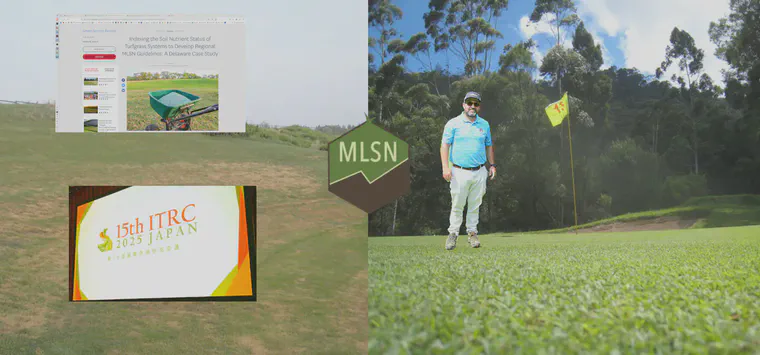Good turf, bad turf, and MLSN
There have been some new developments with MLSN, thanks to John Emerson, Jr.. In the USGA Green Section Record, he published Indexing the Soil Nutrient Status of Turfgrass Systems to Develop Regional MLSN Guidelines: A Delaware Case Study. The article describes the results of his extensive soil nutrient analysis project from the entire state of Delaware, and after analyzing the soil test results, and comparing those results to the turf conditions, and to traditional fertilizer recommendations, he can summarize it like this:
“Following traditional soil test recommendations often leads to applying more nutrients than turfgrass needs to perform well.”
Table 1. Delaware-MLSN minimum values and Global Soil Survey minimum values for soil test results using the Mehlich 3 extractant for good-performing turfgrass soils. The minimum value is found by identifying the test result for which 10% of the sites will have good-performing turf but will have a soil nutrient level lower than the minimum value.
| Element | DE-MLSN | Global Soil Survey |
|---|---|---|
| K | 22 | 31 |
| P | 20 | 23 |
| Ca | 235 | 256 |
| Mg | 34 | 36 |
| S | 5 | 7 |
The results Emerson presented from his research in Delaware are similar to our Global Soil Survey data. Table 1 shows those values, which are in the range we can expect when I make the next update to the MLSN guidelines.

Emerson also made a presentation about this research at the 15th International Turfgrass Society Research Conference in Japan.
One of the questions that came up after his ITRC presentation was related to the difference between nutrient levels in soils producing good and bad turf. Why does the MLSN project base its recommendations on the nutrient levels in soils already producing good turf? Why did Emerson do his soil sampling in Delaware only from good turf? Wouldn’t it make sense to check the soils producing poor turf too?
Sure, that makes sense, but not for the purposes of making fertilizer recommendations using the MLSN method. It turns out that if you sample soils with poor turf conditions, the soil nutrient levels are often higher than the soil nutrient levels under nearby good turf. Why is that? The main reason is nutrient use. Good turf grows more, and good turf harvests more nutrients from the soil, and that’s why good turf will often be growing in soils that have lower nutrient content than soils covered by poor turf.
The take-home message from all this testing a research is this. Fertilizer recommendations made using MLSN should provide plenty of nutrients, and the recent research from Delaware found that good performing turf can be present at even lower soil nutrient levels than in the current version of the MLSN guidelines.
There’s also the elephant in the room, which Emerson brought up: do we as an industry even need to be teaching about conventional guidelines (SLAN), when those conventional guidelines recommend so much more fertilizer than the grass needs?